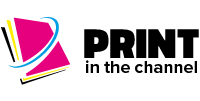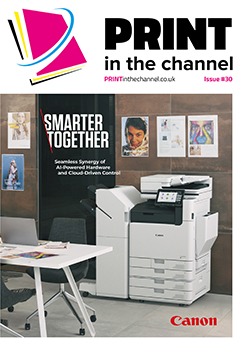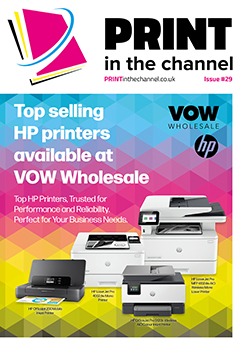Quocirca’s Print Security Landscape, 2024 reveals that the number of print-related breaches has increased and confidence in print infrastructure security has dropped as organisations switch up their print fleets.
With cybersecurity threats continuing to rise, print security is becoming more significant. In addition, changes to print infrastructure composition are coinciding with greater awareness of print security as breaches and their associated costs rise, according to the latest edition of Quocirca’s Print Security Landscape Report 2024.
In the report, 71% of the 500 IT decision makers (ITDMs) from the UK, US and Europe surveyed said that their organisation remains dependent on print, and 80% said they have changed the composition of their printer fleet in the past two years.
In addition, 67% of respondents reported experiencing at least one print-related data breach in the past year, an increase from 61% in 2023. Worryingly, the average financial cost per breach has also risen by 38% year on year, reaching £1,028,346 – demonstrating how significant they can be.
“Print infrastructure security has often been regarded as lower priority than other aspects of cybersecurity,” says Louella Fernandes, CEO of Quocirca. “However, our latest study indicates growing awareness of the vulnerabilities associated with hybrid and remote printing as breach frequency and costs rise.
“Concerns about employee-owned home printers now rank second on the IT security breach list, with office printing in third position. Last year, these issues ranked ninth and eighth, respectively.”
Confidence falls, spending expected to rise
Despite the increasing risks, Quocirca’s report found that just 16% of ITDMs said they are completely confident in the security of their print infrastructure. This continues a three-year trend of confidence decline, from 19% in 2023 and 23% in 2022. SMBs are the least confident, just 13% said they have complete confidence in print security.
The study also showed differences between confidence in office print environments, where 58% are mostly or completely confident, and home/remote printing, where this figure drops to 47%.
The lack of confidence may be prompting organisations to commit more budget to the challenge, with 70% saying that they expect to spend more on print security in the next 12 months.
Home print focus
In terms of the print security measures being introduced, there is more evidence that focus has turned to home printing. Providing authorised printers to home workers that adhere to security policies (42%) is the most commonly implemented measure, followed by reporting and analytics to monitor home and office print usage of each employee for tracking and audit purposes (41%).
Expected AI impact
Artificial intelligence (AI) is also having an increasing impact on print security, with 34% of ITDMs say it is very important that print vendors use machine learning and/or AI to identify potential security threats and cyberattacks. This figure rises to 48% among organisations that see printing as a critical activity, and 41% among managed print service (MPS) users.
However, ITDMs also recognise that AI can be a risk as well as an opportunity, with 62% reporting extreme or moderate concern that AI will be used to create further security risks.
“Organisations that are highly dependent on print demonstrate their acute awareness of the impact AI could have on it,” says Louella. “There is an important role here for vendors and channel partners to ensure their messages around AI opportunities and risks are robust and reassuring in equal measure.”
Benefits not being realised
Elsewhere in the report, organisations using MPS said they had much greater satisfaction with their print supplier’s security capabilities, with 43% saying they were very satisfied compared to only 23% of organisations not using MPS. This correlation holds true over confidence in print infrastructure security, with 21% of MPS users saying they are completely confident, compared to only 18% of non-MPS users.
Organisations using standardised print fleets are less likely to report one or more print-related breaches (59%) than those operating multivendor fleet (70%). However, fewer organisations now operate standardised fleets; 73% now say they operate a mixed fleet, up from 69% in 2023.
Furthermore, organisations operating a mixed fleet expect to deploy more on-premise print servers in the coming year – 68% state that they will increase the number of print servers, compared with only 34% of those with a standardised fleet.
“Alongside a lack of standardisation we are also seeing organisations reticent about moving to cloud print management, with cited reasons including security concerns, perceived lack of functionality and cost,”
says Louella.
“These should all be easy for channel partners to overcome, but it seems clear that a complex, multi-vendor, hybrid cloud print environment is the prevailing approach right now, making management more difficult.”
Leading players: Several OEMs were recognised in Quocirca’s report as being leaders in print security
Sharp was recognised for its development of its strong print security proposition across its hardware and services portfolio, as well as the company’s efforts to raise awareness among European SMEs about its consultative and layered security offerings.
Sharp is the first OEM to integrate a native Microsoft Teams connector into its latest MFPs. This feature enables users to securely access, scan, and print data from Microsoft Teams, alongside additional cloud application integrations such as Google, and SharePoint channels without additional software.
Sharp has long been acknowledged as a leading player in the SMB print market, offering a mature technology platform and a range of A4 and A3 products tailored to the needs of SMBs. The report praised Sharp for its strong IT security credentials and robust hardware-security features, noting that Sharp MFPs and printers include an extensive range of built-in security features with optional Bitdefender malware technology integration.
Sharp’s print security solutions extend beyond direct customers to channel partners, a critical part of the company’s route to market. Quocirca identified that Sharp’s approach is helping resellers to develop new ways of selling with differentiated security-led propositions.
“As Sharp transitions from a traditional print business to offering a diverse range of business technology services to meet the needs of the growing European SME market, this recognition reflects the significant strides we have made to provide enhanced security and differentiating our offerings,” says Jason Cort, director product planning and marketing at Sharp Europe.
“Innovation is at the core of our operations, and we are pleased to see our continued advancements being recognised by both customers and the industry.”
Advances recognised
Meanwhile Konica Minolta retained its leading position in Quocirca’s 2024 assessment of the print security market. The company was recognised for the advances it has made in its multi-layered approach to print security, citing ‘secure and robust product design’; ‘customised security solutions and services such as bizhub SECURE’, and support customers through the automation of security.
In the report, Quocirca stated: “Konica Minolta products are a suitable choice for companies with high data security requirements.”
The strengths of Konica Minolta highlighted by Quocirca include its ‘robust hardware and software security’, a ‘multi-layered solutions portfolio’ and mature ‘IT security expertise’ which the analyst said: ‘can help customers with information security services beyond the print environment’.
The report also highlighted the strength of Konica Minolta’s service portfolio, with bizhub SECURE providing additional assurance that devices are highly secure, and the cloud-based Shield Guard platform that offers remote device security monitoring and management. In addition to Shield Guard, Konica Minolta’s wider cloud security portfolio was acknowledged, with the analyst observing how it: ‘includes multiple options to support and increase customers’ security’.
“For a fourth consecutive year Quocirca has positioned Konica Minolta as a leader in print security,” says Olaf Lorenz, general manager, international marketing division at Konica Minolta Business Solutions Europe.
“Its report highlights the importance of instilling confidence in CIOs and CISOs that their print security provision will protect them from the rising volume and cost of data breaches and future security risks that artificial intelligence may present. We are committed to developing our portfolio of workplace products and services, to enable every organisation to empower its employees to be productive and protected.”










